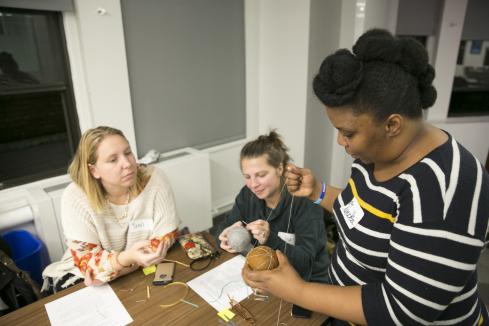
Temari balls are a folk-art form and Japanese craft that originated in China and were introduced to Japan around the 7th century A.D. While these thread balls don't have much practical use, they are amazingly beautiful demonstrations of non-Euclidean geometry and can be used in tactile ways to introduce students to a variety of different concepts, such as measurement and precision, and generalizing algorithms for sides, lengths, and symmetries.

In “Allure of Ancient Art,” an MƒA mini-course held this past fall semester, MƒA teachers explored Temari balls and the most common symmetries from underlying polyhedra projected to the surface of the sphere. They examined using Temari balls as a tool to enhance student understanding and crafted their own by applying the basic techniques of embroidery and symmetry of geometric design.
The course was led by two MƒA Master Teachers, Dorota Caetano and Tenicka Norwood. Tenicka says Temari balls are tremendously helpful for visualizing and studying polyhedrons. “Once students construct Temari balls and create patterns on them, they move beyond thinking of geometry as fixed answers on a single plane.” She finds it refreshing to build a model with easy to obtain materials that “teaches complex content in a self-evident manner.”
These types of MƒA workshops give teachers the opportunity to collaborate and build on their expertise. “I’m able to expand my knowledge of mathematical and computational logic in a new and novel way,” said Tenicka.
